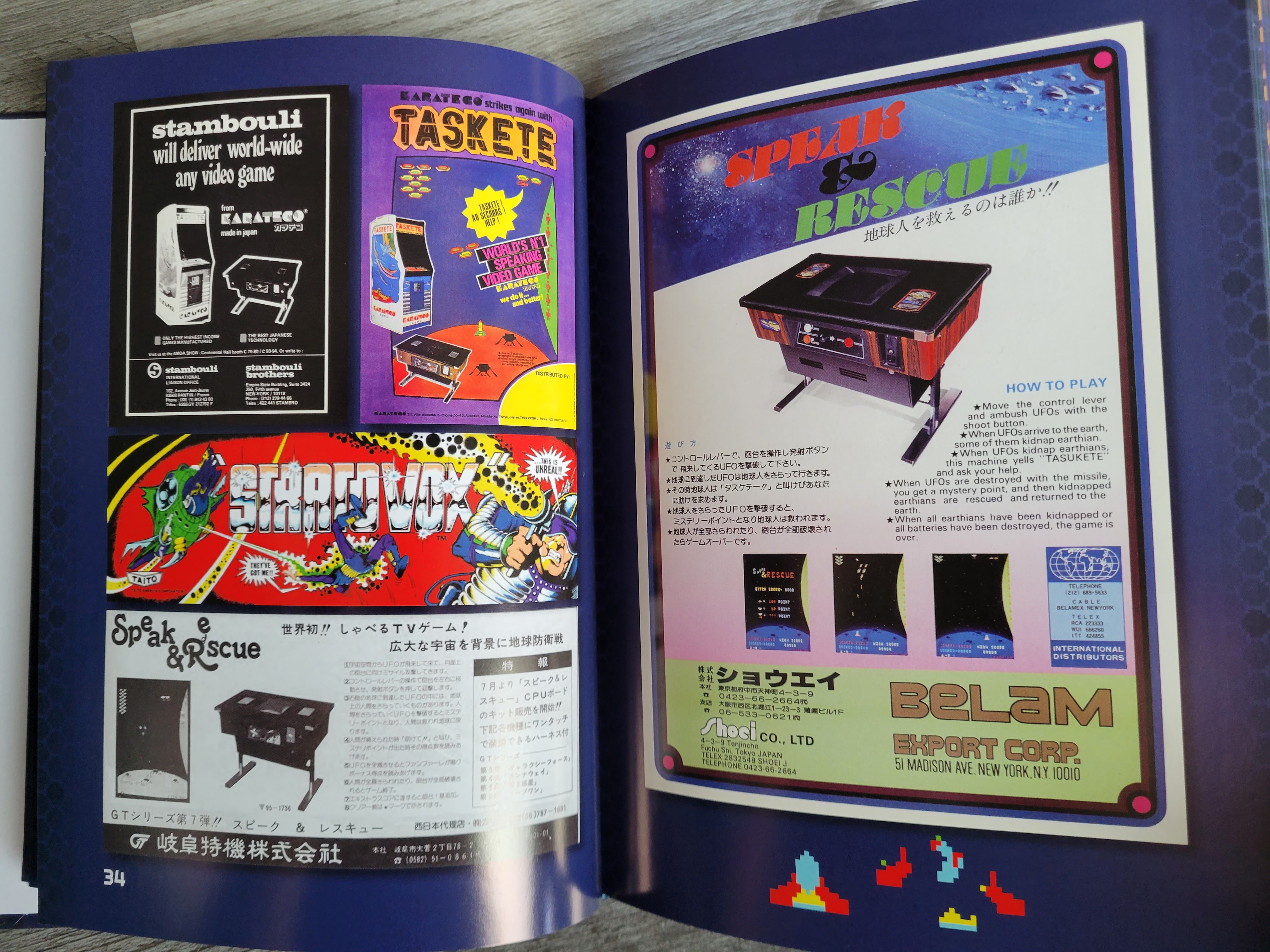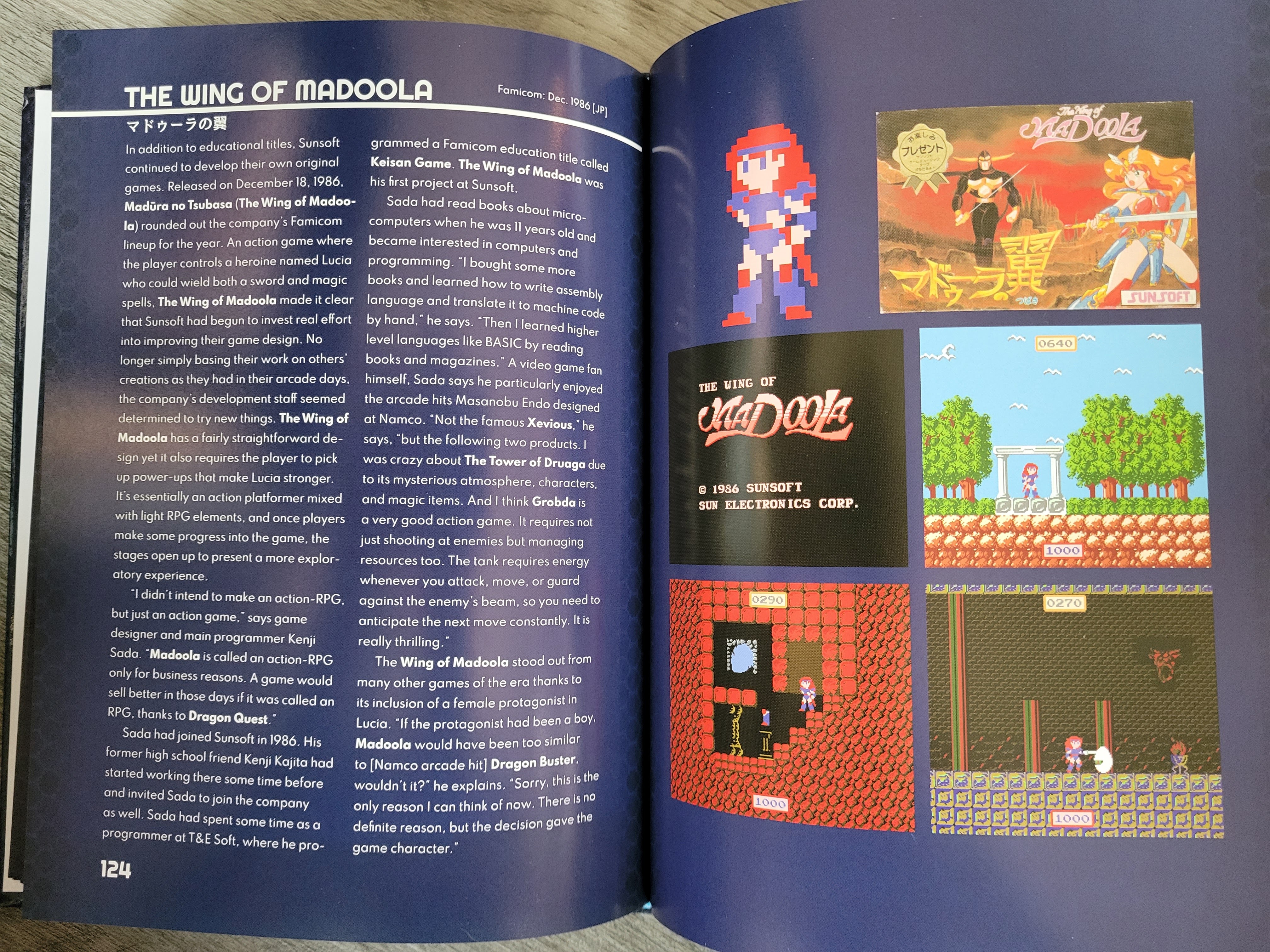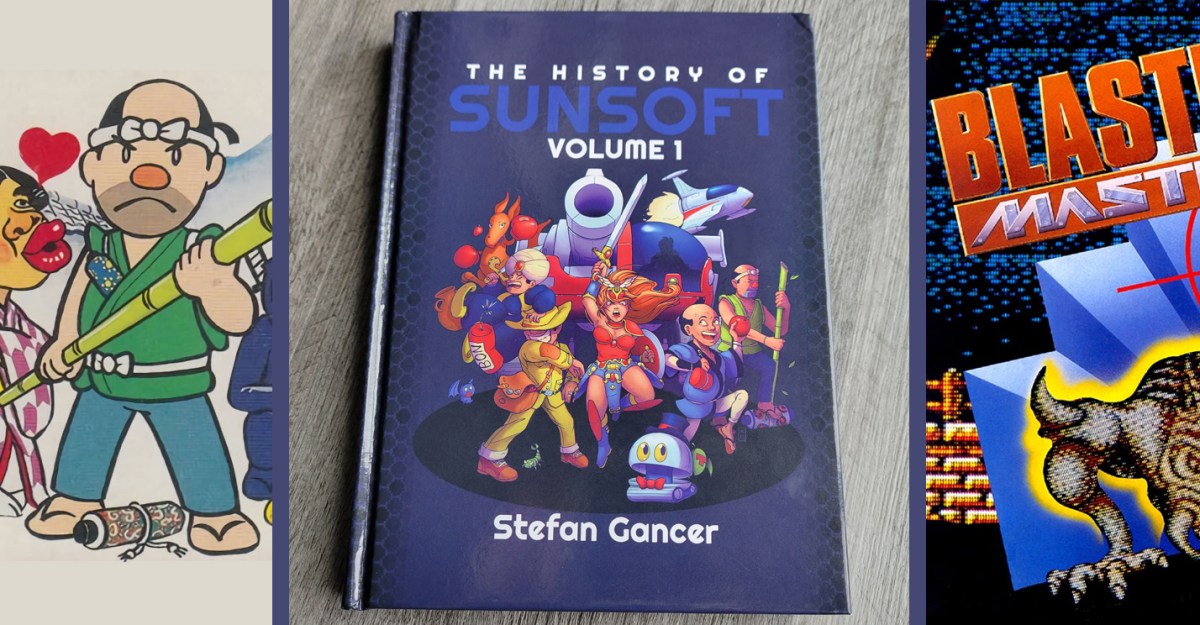Sunsoft has never been a household name, so the fact that the book The History of Sunsoft Volume 1 exists at all feels like a wonderful statement of intent from Limited Run Games’ new print publishing label, Press Run. It reflects that all video game history is important history that should be thoroughly recorded for the future, and author Stefan Gancer has done a wonderful job of documenting the origins of this fabled company, tracing a line from Tokai Textile Industries in 1958 to Blaster Master in 1988. If you want to keep your nerd street cred in high standing, this would be a great book to add to your collection.

The Story of Sunsoft, from Arcade Clones to NES Classics
Gancer has left no stone unturned in his quest to capture every nitty-gritty detail of the earliest years of Sunsoft. The History of Sunsoft Volume 1 begins with an explanation of Sunsoft founder Masami Maeda, who first helmed his father’s company, Tokai Textile Industries, and the book explains point by point how Tokai begat Sunsoft. At several junctures, the book will take an aside to explain the many different business relationships between companies and individuals, how and why they came to associate, and how these relationships would blossom into future game projects, whether for arcade or home consoles (mostly NES / Famicom). It’s not all extremely interesting, but it’s valuable historical documentation.
In turn, The History of Sunsoft Volume 1 collects information garnered from both existing materials and myriad new interviews from people who worked in or with the company, in Japan and North America both. There is also a wealth of new images for various Sunsoft games, including promotional materials (Japanese and English) and documentation for canceled games, in addition to screenshots of sometimes extremely obscure games.
Indeed, of the book’s brisk 224 pages, the first 80 or so pages are mostly dedicated to arcade games, often Japan-only. Do you remember the Breakout-inspired G.T. Block Perfect, Sun Electronics’ first game? No, of course not. Gancer is probably among a handful of people in the country who has ever even heard of it. But Gancer lovingly collects as much information as possible about it, placing it and its hardware in its historical context. With rare exception, he attempts to give this treatment to each Sunsoft game and in roughly chronological order, all while maintaining the quick pace.

It’s really cool to flip through the pages and see how extremely rudimentary Galaxian-like games gave way to more intricate NES experiences in just a few years’ time. And the book spells out the lessons learned, the technological innovations made, and the new employees hired that made these superior games possible. The section that explains how Sun Corporation of America, the American branch of Sunsoft, came into being and began developing its own games is particularly fun, even if Volume 1 ends on a bit of a downer, with American development teams being laid off due to a strategic shift.
The History of Sunsoft Volume 1 has also gotten me interested in checking out a few Famicom games I had never heard of before, like open-ended adventure game Atlantis no Nazo and action sidescroller The Wing of Madoola. For the average gamer who isn’t so history-minded, that’s probably the book’s greatest value — its ability to cast a spotlight on hidden gems you might want to try. As this is only Volume 1, ending somewhere in 1989 of the company’s history (just before what the author describes as Sunsoft’s “golden age”), there aren’t many games in the book well known in America.
Action adventure NES classic Blaster Master is definitely the highlight, and it gets 14 pages of text and images accordingly. Otherwise, you’ll mostly recognize Sunsoft’s ports of games like Fantasy Zone, Spy Hunter, Alien Syndrome, and After Burner, which, to be fair, are often impressive ports. We can count on Volume 2 to have many prominent titles like the NES Batman though, so if you want to be fully up to speed for that book, you might want to start here.

The Review Verdict on The History of Sunsoft Volume 1
If you’re the type of person who just loves video games and loves learning new things about video games, The History of Sunsoft Volume 1 is an easy recommendation. And if you’re an actual Sunsoft fan, you probably either already bought the book or didn’t know it existed until this moment. Stefan Gancer has done a wonderful and commendably thorough job of capturing the history and the context behind one of gaming’s earliest developers, all while making it a breezy read that can be finished in a few days. In a nutshell, this book makes a nice addition to your coffee table clutter.
A review copy of The History of Sunsoft Volume 1 was provided by the publisher.






Published: Nov 14, 2022 01:30 pm